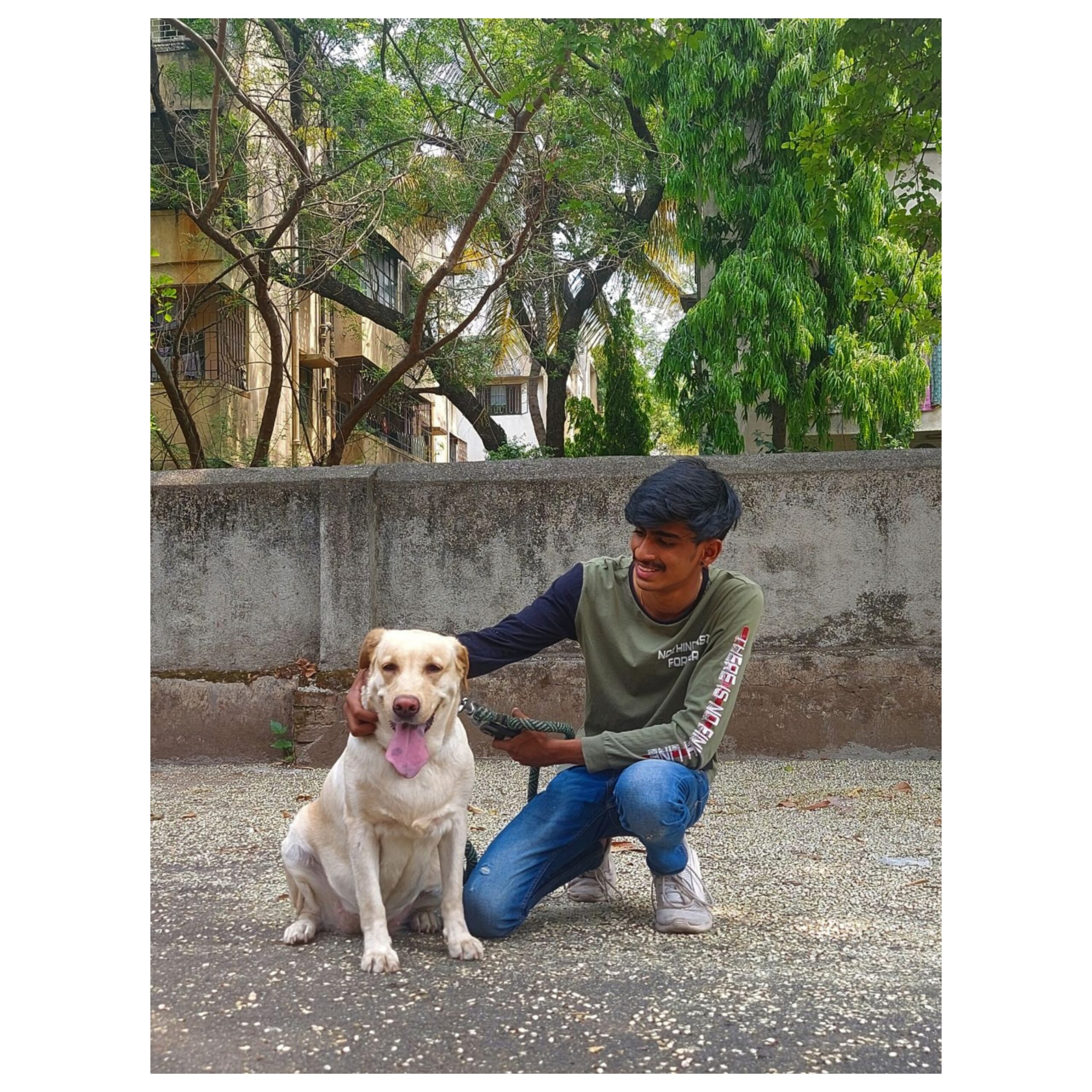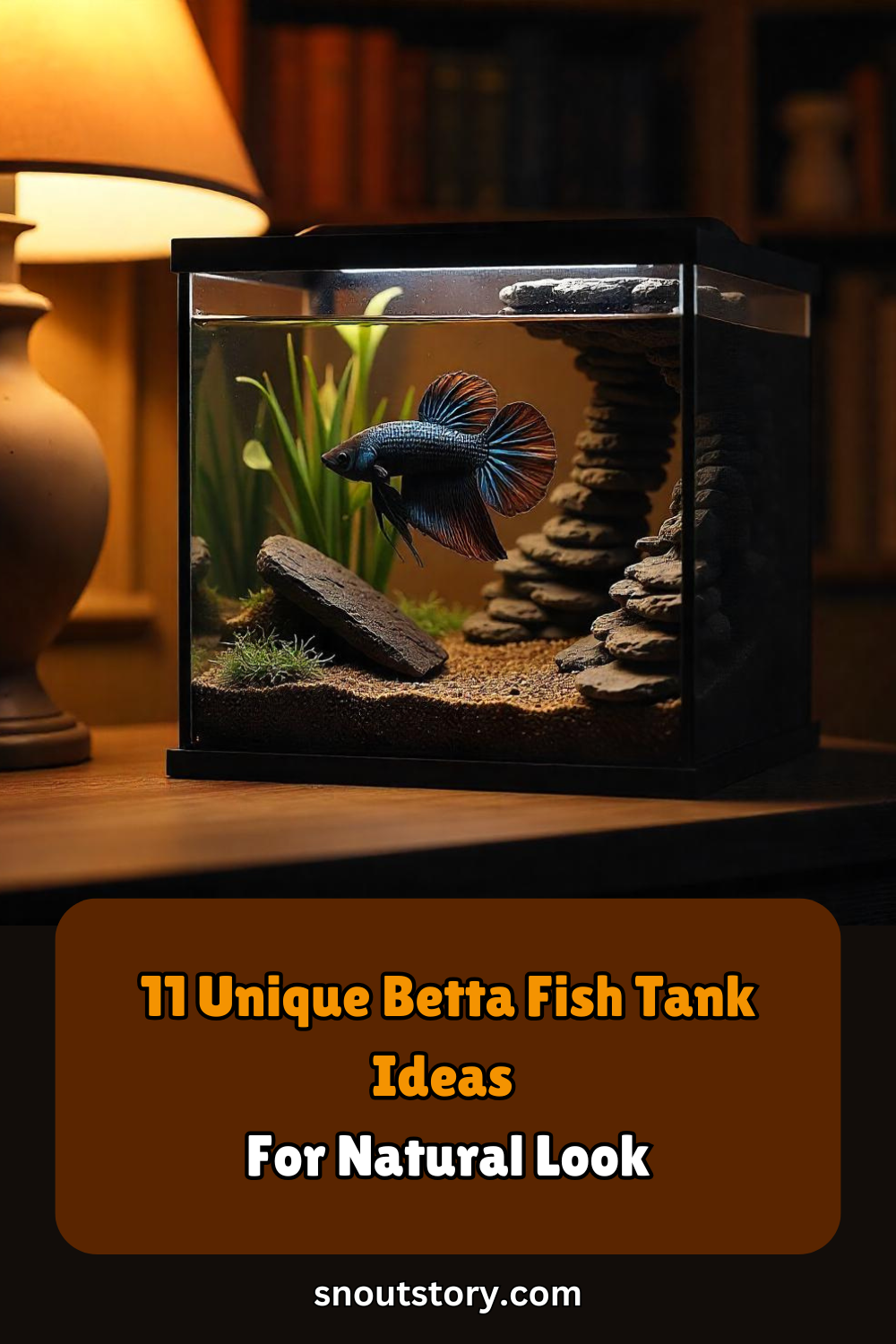A natural-looking Betta fish tank doesn’t just elevate the beauty of your space—it also brings your Betta closer to the environment they’re instinctively wired for. Instead of defaulting to plastic décor and fluorescent gravel, you can design a habitat that mirrors the calm, shaded waters in which Betta fish naturally thrive.
Think floating plants, driftwood, soft leaf litter, and low lighting that creates a sense of security. Whether leaning toward a Southeast Asian biotope or a minimalist mossy scape, each setup gives your Betta a more enriching, low-stress home. This guide explores 11 unique tank ideas that balance visual appeal with comfort, so your fish can live naturally and flourish.
If you are new to this blog, let me tell you, I always recommend our community with the best and affordable relevant products (Marked with Red Links) so that you can easily find the right things without wasting extra time.
Disclaimer
“This Blog is completely reader-supported. For any purchase you make from affiliate links on this blog, we earn a small commission with no extra cost to you, which I use to feed my cute puppies 🥺”
Here are Betta Fish Tank Ideas that will help you design a habitat that feels as natural as it looks:
1. Southeast Asian Riverbank Theme

You can recreate the natural beauty of a Southeast Asian riverbank by designing a tank that mimics the dense, shaded jungle streams where wild bettas thrive. Use a dark substrate like black river sand or fine gravel to bring out your betta’s colors while keeping the scene grounded and natural.
Incorporate soft driftwood pieces with gentle curves, such as Malaysian driftwood, to create natural hideouts and anchor your aquascape. Add broad-leafed aquatic plants like Java fern, Cryptocoryne, and Anubias barteri, which do well in low light and replicate native foliage.
Leaf litter, like Indian almond leaves or catappa bark, helps to mimic the tannin-rich waters and has the added benefit of supporting your fish’s immune system. A sponge filter or a gentle hang-on-back filter keeps water movement minimal, just like in their slow-moving native habitats. For lighting, opt for a soft LED with adjustable brightness to prevent stressing your betta and to encourage natural plant growth.
Products to recreate this idea:
– Black river sand or fine natural gravel
– Malaysian driftwood
– Java fern, Cryptocoryne, Anubias barteri
– Indian almond leaves or catappa bark
– Sponge filter or gentle hang-on-back filter
– Adjustable soft-spectrum LED light
2. Leaf Litter Forest Stream Setup

A leaf litter forest stream setup gives your betta a moody, natural environment that mirrors the calm, tannin-rich waters of tropical forest floors. You start with a dark, soft substrate like fine-grain river sand to keep the tank low-contrast and soothing.
Scatter a generous layer of dried botanicals—Indian almond leaves, guava leaves, or magnolia pods—not just for the authentic look but to release beneficial tannins and lower the pH gradually. These leaves also break down over time, creating microhabitats for beneficial bacteria and microfauna.
Use spider wood or branchy driftwood to mimic fallen limbs, and tuck in shade-loving plants like Bucephalandra and Cryptocoryne to soften the look. Keep filtration gentle—sponge filters work best here—to maintain water clarity without disrupting the peaceful aesthetic. Lighting should be subtle and warm-toned, just enough to highlight the natural textures without overwhelming the scene.
Products to recreate this idea:
– Fine-grain river sand or dark natural substrate
– Indian almond leaves, guava leaves, magnolia pods
– Spider wood or branchy driftwood
– Bucephalandra and Cryptocoryne plants
– Sponge filter
– Warm-toned adjustable LED lighting
3. Zen Garden Aquascape Design
A Zen garden aquascape gives your betta a serene, minimalist home that feels calm and balanced without being sterile. You work with negative space as much as with the hardscape—smooth river stones, sand trails, and carefully positioned driftwood become the core elements.
Start with a light-colored substrate like cosmetic sand, and use a small rake or spoon to carve subtle patterns that echo traditional dry landscapes. Instead of crowding the space with plants, choose just one or two low-maintenance species like Anubias nana petite or a small clump of moss on stone.
Keep everything open and clean to allow your betta to glide effortlessly across the space. The key here is balance—each object should feel intentionally placed. Use a gentle sponge filter for quiet water flow and a soft daylight LED to maintain that bright but peaceful aesthetic.
Products to recreate this idea:
– Natural Soil Substrate
– Smooth river stones or minimalist driftwood
– Anubias nana petite, Java moss or moss stones
– Aquarium sand rake or aquascaping tweezers
– Sponge filter
– Soft white LED lighting system
4. Blackwater Jungle Biotope
A blackwater jungle biotope gives your betta a tank environment that mimics the soft, acidic waters of their natural Southeast Asian habitat, rich in tannins, dimly lit, and full of organic textures. You’ll notice your betta acting more relaxed in this setup, especially with the mellow lighting and darker water tones.
Use Indian almond leaves or catappa bark to tint the water and naturally soften it. Scatter dried botanicals like alder cones, guava leaves, or even banana stems across the substrate to deepen the jungle vibe while supporting beneficial microbes.
Opt for a dark sand or soil substrate, and layer it with pieces of twisted driftwood and dense, slow-growing plants like Java fern and Bucephalandra. Keep filtration low-flow and lighting subdued—betta fish thrive in the still, shaded calm. It’s not just for aesthetics; this setup supports your fish’s physical health and natural behavior.
Products to recreate this idea:
– Indian almond leaves
– Dark aquarium soil or black sand substrate
– Twisted driftwood and root wood
– Java fern, Bucephalandra, or Anubias
– Low-flow sponge filter
– Dimmable LED light with a warm spectrum
5. Mangrove Root-Inspired Layout
A mangrove root-inspired layout gives your betta fish the kind of structured cover they naturally navigate in the wild while also turning your tank into a visually immersive scape. You’ll want to focus on creating vertical complexity—use spider wood or Mopani driftwood arranged to mimic twisted, partially submerged mangrove roots.
Let the wood anchor into fine sand or mud-colored substrate to reinforce the look. The trick here is layering—nest small rooted plants like Anubias nana or Java fern between the gaps and drape moss over the wood for texture. The overhangs these roots create act as shaded hideouts, reducing your betta’s stress and encouraging natural behaviors like flaring, stalking, and resting.
Keep the water slightly tinted using Indian almond leaves or botanicals to simulate the tannin-rich water common to mangrove ecosystems. Use a sponge filter to maintain a gentle flow—betta fins don’t pair well with strong currents. This layout doesn’t just look good—it makes your fish feel secure and gives you a functional, low-maintenance environment that mimics nature’s balance.
Products to recreate this idea:
– Spiderwood or mopani driftwood
– Fine sand or mud-tone aquarium substrate
– Anubias nana or Java fern
– Moss (such as Christmas moss or Java moss)
– Indian almond leaves or botanical pods
– Sponge filter for soft filtration
6. Bamboo Grove Aquatic Scene
A bamboo grove aquatic scene brings a clean, minimalist feel to your betta tank while still offering the complexity your fish needs to feel at home. To pull this off naturally, use real lucky bamboo positioned vertically to mimic a grove—space them out enough for your betta to weave through without snagging fins.
Pair that structure with a light-colored sand substrate to create contrast and add clarity to the overall setup. Add floating plants like Amazon frogbit or red root floaters to break up light at the surface and provide shaded coverage. A gentle sponge filter is your best bet here, keeping the water calm while maintaining water quality.
To soften the look and encourage more exploration, include a few smooth river stones and low-profile plants like dwarf sagittaria or crypts along the base. This layout not only delivers a peaceful aesthetic but also gives your betta varied terrain and light sheltering to explore comfortably throughout the day.
Products to recreate this idea:
– Lucky Bamboo
– Light-colored sand substrate
– Amazon frogbit or red root floaters
– Sponge filter for gentle flow
– Smooth river stones
– Dwarf sagittaria or Cryptocoryne plants
7. Driftwood Cavern Territory
A driftwood cavern territory gives your betta a natural, shaded environment that mimics the nooks and crannies they instinctively seek in the wild. You’ll want to start with a centerpiece of dense, twisted driftwood—cholla wood or Malaysian driftwood works best because they release beneficial tannins and provide stable hiding spots.
Stack or anchor the pieces to create an overhang or small cave-like structure, making sure there are no sharp edges that could tear delicate fins. Add a darker, natural gravel or sand substrate to ground the scene and bring out the contrast in the wood’s texture. Use low-light plants like Java fern or Anubias attached directly to the driftwood to soften its lines and create a seamless blend.
For added enrichment, tuck in Indian almond leaves or botanical pods to give your betta more visual interest and simulate a forest floor vibe. This setup not only supports your fish’s territorial instincts but also helps reduce stress by offering consistent cover and a sense of security.
Products to recreate this idea:
– Malaysian or cholla driftwood
– Dark natural gravel or sand substrate
– Java fern or Anubias plants
– Indian almond leaves
– Aquarium-safe botanical pods (like savu pods or casuarina cones)
– Small aquarium-safe rocks for structure stabilization
8. Submerged Rice Paddy Look
A submerged rice paddy setup captures the calm, shallow waters that bettas naturally thrive in across Southeast Asia. You’re aiming for a layout that feels open yet enriched with vertical cover and soft filtration. Start with a fine sand or nutrient-rich planted substrate to support live aquatic grasses—dwarf hairgrass and Vallisneria are perfect choices to mimic young rice stalks.
Space the plants in neat, grid-like rows or staggered clusters to evoke that cultivated paddy feel. Use sponge filters or gentle internal filters to maintain clean water without strong currents, keeping things betta-friendly. The key is in the vertical movement of the plants; your betta will love weaving through the leaves and resting on broad blades.
Add floating plants like salvinia or frogbit to shade portions of the tank and create that dappled light effect often seen over flooded rice fields. Keep décor minimal and let the plants do the work—this layout is about subtlety and balance.
Products to recreate this idea:
– Nutrient-rich planted tank substrate
– Dwarf hairgrass or Vallisneria
– Sponge filter or gentle internal filter
– Floating plants like salvinia or Amazon frogbit
– LED aquarium light with adjustable brightness
– Aquarium-safe plant fertilizer (liquid or root tabs)
9. Moss-Covered Rock Garden Style
A moss-covered rock garden setup gives your betta a calm, textural space that encourages natural behavior without overwhelming the layout. You’ll want to use smooth, rounded stones as your foundation—river rocks or dragon stones work great—and anchor them in varying sizes to form clusters and levels.
This creates natural perches and shaded nooks. Cover these stones with aquatic mosses like java moss or Christmas moss using thread or aquarium-safe glue; over time, the moss will grow lush and soften the rocky aesthetic. Keep your lighting moderate to support moss growth without triggering algae blooms.
Bettas appreciate the contrast of light and shadow that this setup creates, often using moss-covered spots for resting or hiding. To maintain a serene look, skip bright artificial décor and focus on subtle flow with a sponge filter or gentle waterfall filter that won’t disturb the water surface too much.
Products to recreate this idea:
– Smooth river rocks or dragon stones
– Java moss or Christmas moss
– Aquarium-safe super glue or plant thread
– Sponge filter or low-flow waterfall filter
– Adjustable LED aquarium light
– Aquascaping tweezers for precise moss placement
10. Shaded Amazonian Understory Tank
A shaded Amazonian understory tank brings out your betta’s natural behavior by mimicking the dim, plant-dense regions beneath the jungle canopy. Start with a dark sand or fine-gravel substrate to tone down reflections and let your foliage pop.
Use a mix of rooted plants like Amazon swords and floating varieties such as frogbit or red root floaters to create a dappled light effect—your betta will instinctively gravitate toward the soft shadows. Add leaf litter, Indian almond leaves, and driftwood to release tannins that not only tint the water with a warm amber glow but also help replicate the acidic parameters typical of this region.
Keep your lighting low to moderate; a programmable LED light with adjustable intensity gives you more control. To round it out, install a gentle sponge filter to maintain water movement without disturbing the calm, layered aesthetic.
Products to recreate this idea:
– Fluval Stratum or dark aquarium sand
– Amazon sword plants and Cryptocoryne wendtii
– Floating plants like frogbit or red root floaters
– Indian almond leaves and small seed pods
– Spiderwood or Malaysian driftwood
– Low-flow sponge filter
– Adjustable LED light with dimming feature
11. Minimalist Mud Bottom Habitat

A minimalist mud bottom habitat gives your betta fish a raw, earthy environment that closely mirrors stagnant pools and shallow, slow-moving waters found in the wild. You’ll want to skip the gravel entirely and go for a natural mud substrate—either mineral-rich clay-based substrate or capped organic soil that encourages microbial life and plant root growth.
This setup isn’t about clutter; it’s about intention. Choose one or two low-maintenance rooted plants like Vallisneria or Nymphaea lotus and let them spread slowly. Keep décor to a minimum—maybe a single piece of branchy driftwood half-submerged to offer cover without breaking the visual calm.
Avoid powerful filters; a sponge filter or nano hang-on-back with baffled flow keeps the water stable while preserving that undisturbed murky vibe. Let the water tint slightly with tannins for authenticity, and don’t panic if you see a little mulm building up—it’s part of the charm.
Products to recreate this idea:
– Fluval Plant & Shrimp Stratum or ADA Amazonia soil
– Organic potting soil (aquarium safe) capped with fine sand
– Vallisneria spiralis or Dwarf Tiger Lotus
– Spiderwood or branch-style driftwood
– Low-flow sponge filter or adjustable nano HOB filter
– Indian almond leaves or Catappa bark for tannins
Summary
Creating a naturalistic environment for your betta isn’t just about aesthetics—it’s about replicating the calm, organic spaces they instinctively thrive in. From shaded Amazonian understories to minimalist mud-bottom habitats, these 12 unique betta fish tank ideas offer more than just visual appeal; they help reduce stress, encourage natural behavior, and promote overall well-being.
Whether you’re drawn to moss-covered rock gardens or the soft flow of a Southeast Asian riverbank, there’s a style here that fits your space and your betta’s instincts. Choose the setup that speaks to you, invest in the right natural elements, and let your betta enjoy a slice of the wild right at home.

Vedant Narvekar is an experienced digital marketing expert with a profound love for nature and animals. With a career rooted in leveraging online platforms to drive engagement and promote meaningful causes, Vedant’s passion for animals inspired him to start Snout Story—a blog dedicated to educating people about pet keeping and sharing proper knowledge about caring for animals. Drawing on his expertise in digital marketing, Vedant utilizes his platform to advocate for responsible pet ownership, providing valuable insights on pet care, training, nutrition, and more. Through Snout Story, Vedant aims to empower pet lovers with the information they need to provide the best possible care for their furry companions, while also fostering a deeper appreciation for the natural world and the creatures that inhabit it.

